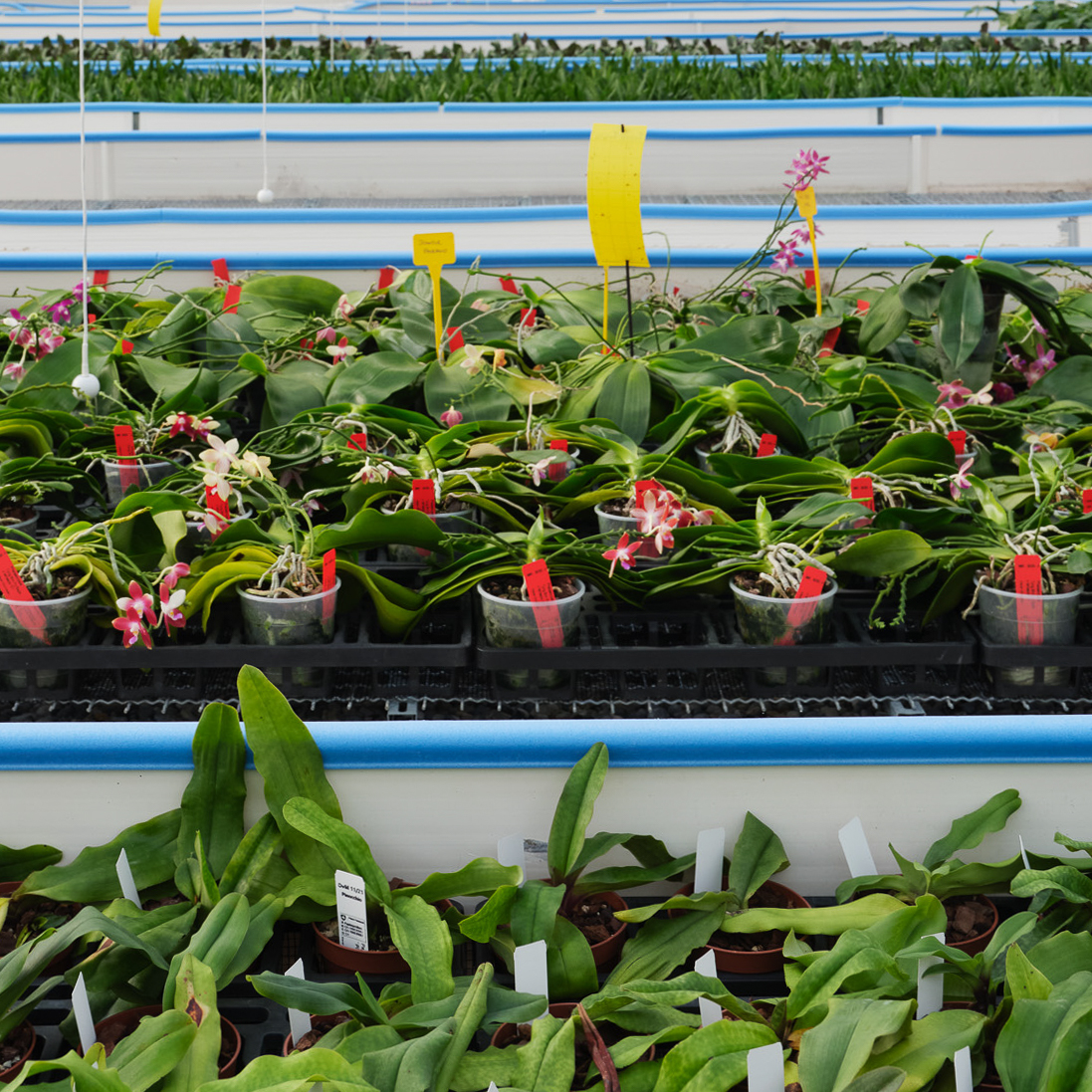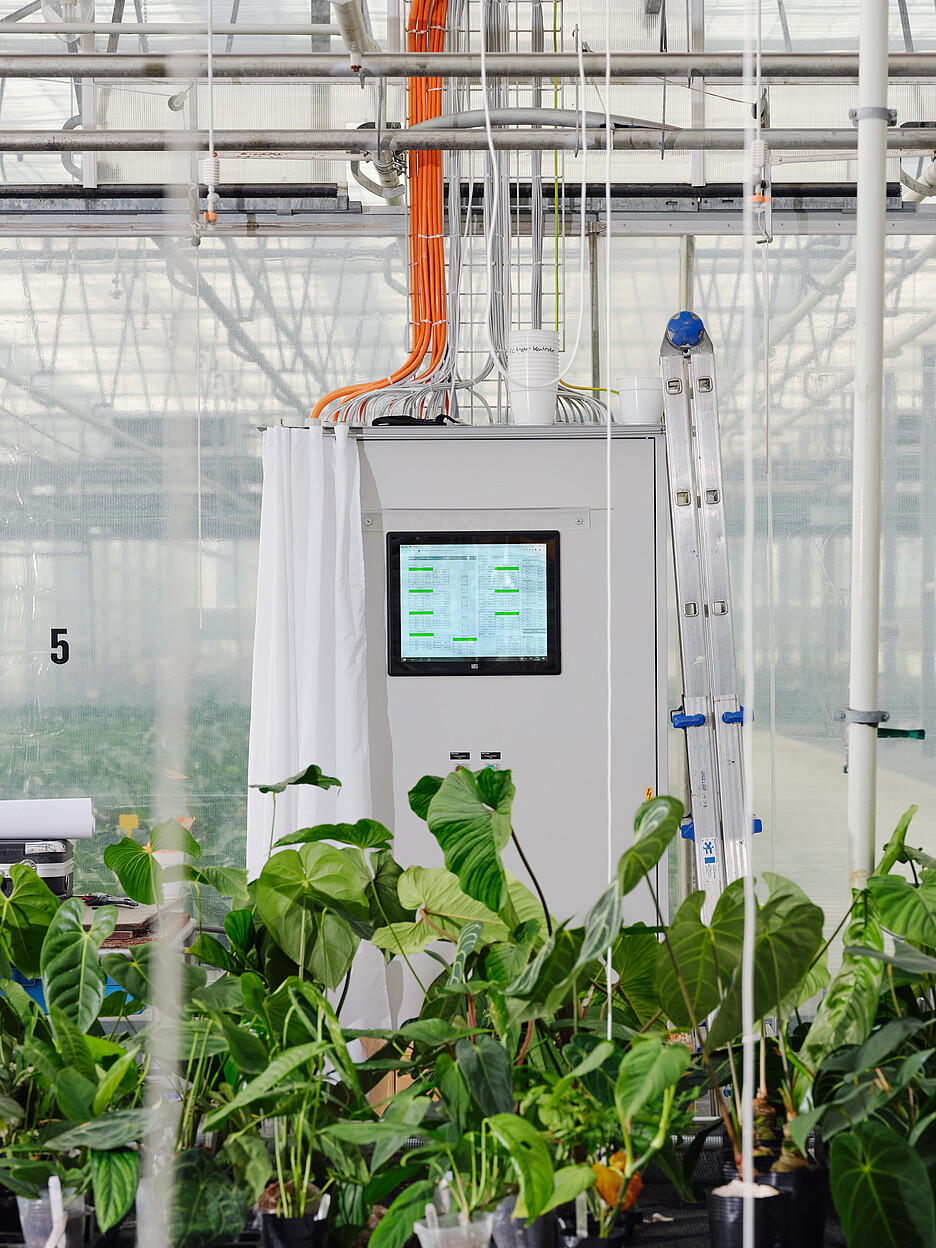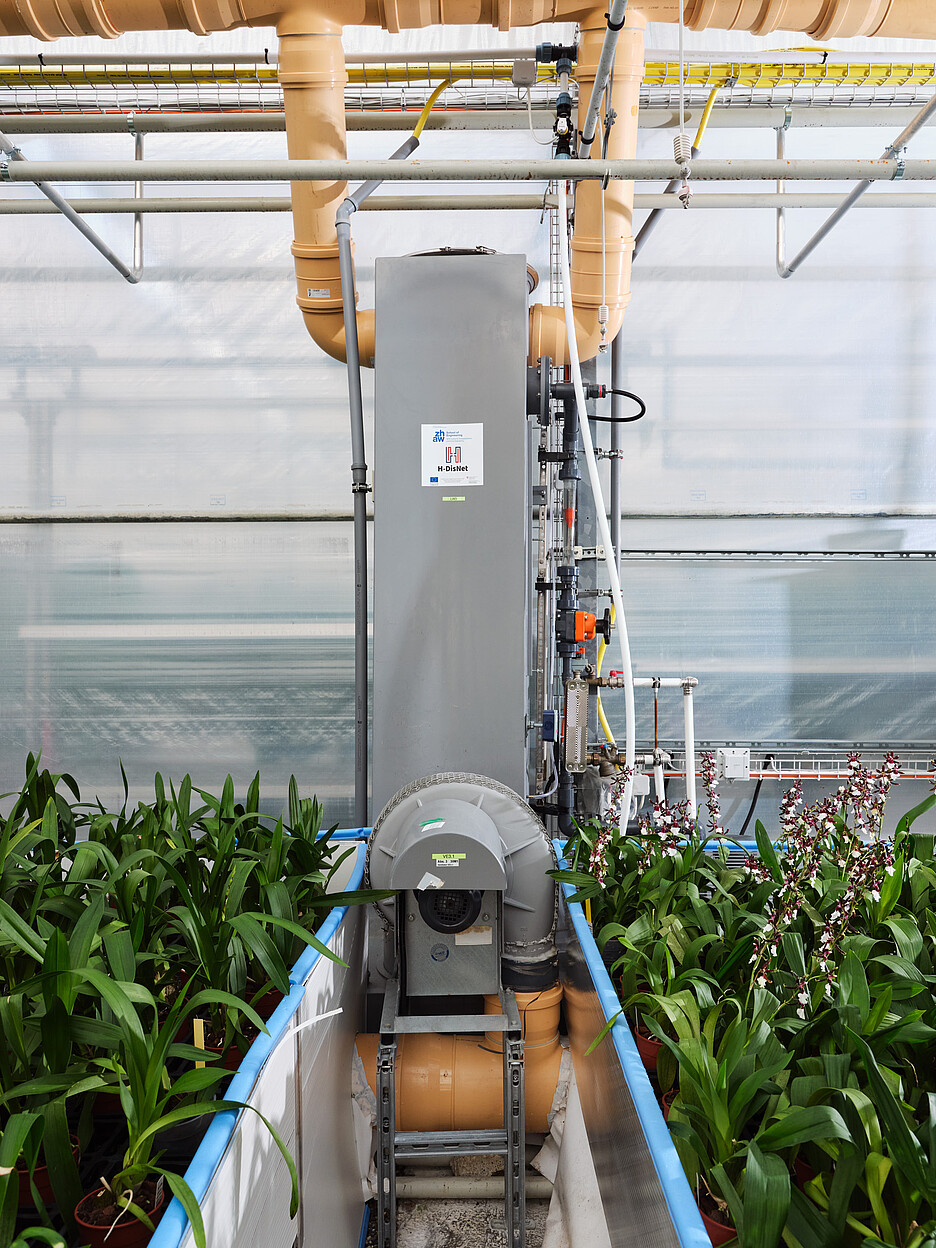
Storing summer heat in a salt solution
ZHAW researcher Thomas Bergmann doesn’t consider it a good idea to use electricity for heating. His alternative concept makes use of thermochemical networks that can transport and store heat with virtually no loss.
If salt comes into contact with air, it becomes moist – something we can observe on a daily basis. A solution forms on the surface of the grains of salt, made up of water extracted from the air and salt. In the course of this process, heat is released, since the water changes into a more stable state as it incorporates the salt in its structure. This is why we can use salt to thaw ice on the roads in winter. Conversely, however, energy has to be introduced if the water is to be separated from the salt again. This is why the boiling point of salt water, for example, is higher than the boiling point of fresh water.
“The major advantage of this approach is that the heat generation and use can take place at a different time and location.”
From these observations it is possible to derive the basic idea behind the innovative and sophisticated form of heat supply envisaged by Thomas Bergmann, Head of the Thermal Storage Research Group at ZHAW School of Engineering in Winterthur. All that is required is a heat source and a salt solution. The heat is used to evaporate water, thus increasing the salt content of the solution. The concentrated salt solution now contains energy or, to be more precise, chemical potential, which can be used to generate heat again. And this is done by adding new water to the solution and diluting it.
Transported with virtually no loss
“The major advantage of this approach is that the heat generation and use can take place at a different time and location,” says Thomas Bergmann. Instead of transporting heat, which always incurs losses, it is sufficient in this case to convey the salt solution to the place of consumption. The solution can be transported and stored with virtually no loss, which means no pipes or tanks have to be insulated in a thermochemical network, contrary to a conventional district heating system. “The outlay on transport is approximately one hundred times lower,” says Bergmann.
Selective heating of a greenhouse

Through a demonstration plant developed as part of the EU research project H-DisNet, Bergmann’s team has shown that this approach works in principle. In their case, it is the greenhouse at a nursery that is being heated. To do this, inside air is drawn in and made to flow through the salt solution. The solution extracts water vapour from the air, releases energy and thus heats the airstream. Then, instead of heating the entire greenhouse, the now warm air is conveyed specifically to the plant tables, thus saving energy. The nursery can halve its overall energy consumption in this way. In 2020, the greenhouse project won the “Watt d’Or” award presented by the Swiss Federal Office of Energy (SFOE). The plant is now being automated in an SFOE follow-up project. If it runs stably, the plans are to connect it via pipelines to a nearby industrial estate. The diluted salt solution will then flow to the estate where it will be regenerated by means of waste heat or solar thermal energy. The concentrated solution will then flow back to the nursery.
“Plant growth is also improved and there is less pest infestation.”
The new method also has other advantages. “Working with the Institute of Natural Resource Sciences in Wädenswil, we have been able to show that plant growth is also improved and there is less pest infestation,” says Bergmann. Since the air not only heats up as it flows through the salt solution but also dries out, the same principle can also be applied for drying herbs – another project being pursued by Bergmann. “The temperature can be adjusted more precisely than with conventional dryers. This gives rise to energy savings and a higher quality of the end products.”

This too, however, is just one piece of the puzzle for the new energy supply system that Thomas Bergmann is aiming for. “Heat used for heating and drying accounts for about forty percent of Switzerland’s energy requirements,” he says. He doesn’t think it’s a good idea to switch to electricity for this, as is currently being done with heat pumps. “This involves converting high-grade energy, i.e. electricity, into low-grade energy, i.e. heat, which entails both an outlay and losses.” If we had a thermochemical network for heating, we could use the valuable electricity for other applications. At the same time, this would solve the problem of the winter energy gap, since summer heat could be stored in salt solutions and used for heating in winter.
Business models sought
As convincing as it all sounds, we are currently still at the pioneering stage. While tens of thousands of heat pumps are currently being installed, Bergmann’s approach is still largely unknown. “The applications work – that is something we have shown,” he says. “I now see our main task in starting discussions about the system.” We need partners from industry, business models and new training courses for the engineers who will be required to install the systems in future. Bergmann is working on all these aspects. But large-scale implementation is still a long way off.
0 Comments
Be the First to Comment!